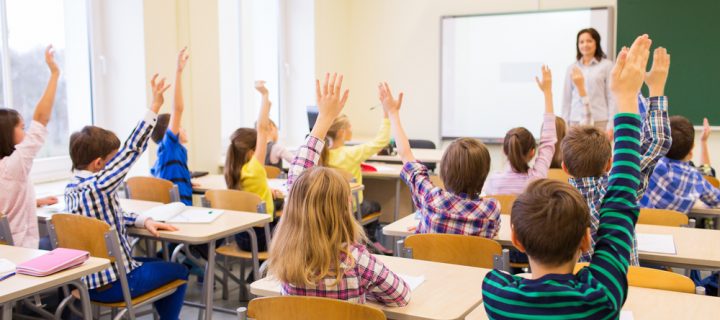Proximity and being close to each other triumphs over familiarity.
The friends we make in school can last a lifetime. As with so many aspects of your social life, you may think you chose your first friends based on similar interests. This could be things like your taste in TV shows and clothing, and your sense of humor: the kinds of things kids gravitate towards. But this may not actually be the case. New research has shown that where a teacher assigns students to sit in class actually weighs in quite heavily when it comes to the development of childhood friendships. This may be even more impactful than personal interests. It all has to do with classroom proximity.
Being beside besties
A study done by researchers at Florida Atlantic University (FAU) found that students who sat near each other in elementary school were more likely to be friends with each other. This was compared with students sitting elsewhere in the room. And when teachers reassigned seating and these near-neighbors changed, children were more likely to make new friends with whomever they were now close to. Those they had been friends with, who were now elsewhere in the class, were soon placed further down the friendship list.
Kids showed that they were more likely to build friendships based on proximity than familiarity.
The study looked at 235 students, boys and girls, in grades 3 to 5 attending public primary school in South Florida. These participants were asked to nominate who their friends were at two points during a 13-14 week time period.
“Of course, students were not glued to their seats; interactions with far-seated peers undoubtedly occurred during lunch, recess and… free time activities,” said Brett Laursen. Laursen is a professor of psychology at FAU and the study’s senior author.
Related: It’s official: teams with friends work better
“The fact that new friends tended to emerge among the newly near-seated — despite opportunities for engagement with other classmates — underscores the power of proximity in friendship formation,” he added.
Larsen reinforced the importance for teachers to consider the huge impact they can have on the interpersonal lives of the students in their class.
“With great power comes great responsibility,” he said. “We urge teachers to exercise their power judiciously.”
The benefits of childhood friendships
Psychologists say early childhood friendships can be a contributor to the quality of a child’s life later on. They can also contribute to their ability to better adjust to changes in life as they pop up and contribute towards better academic performance. Strong friendships at a young age can lead to better self-esteem. This can then lead to a stronger ability to focus in school without feeling lonely. It doesn’t matter whether your child gravitates towards having many friends or just a few friends as long as there’s someone they can connect with to provide a positive sense of belonging.
If you’re not sure what may be going on at school, touch base with your child’s teacher. Schedule a meeting to talk with them when school is back in session. Keep connected and ask about how your child’s social life is going, as well as their academic skills. These may be just as, if not more, important.
photo credits: Ground Picture/Shutterstock.com












